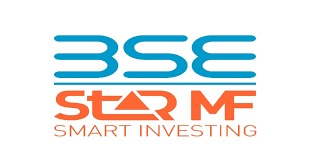According to the union government’s regulation, an Indian citizen cannot trade in physical share certificates anymore. The investor will have to convert the physical share certificates into a dematerialized (Demat) format, or an electronic format. The Securities and Exchange Board of India (SEBI) has notified that earlier. This will help the investors to ease the procedure of buying, selling, and transferring the shares of a company.


At the initial stage, you must open a demat account with the depository participant (DP). A DP is a SEBI-registered entity that generally acts as a broker or intermediary between you and the depository or bank. Sometimes your bank also performs the duties/functions of a DP. One must ensure that the names given for his/her demat account match with the name mentioned on the physical share certificates. You must duly file the account opening form for setting up an authorized account with a DP.

After filling the account opening form, you as a shareholder must fill out a DRF form. You must also make sure that you surrender all your physical share certificates to the DP while submitting your DRF form. One must also not forget to write ‘Surrendered for dematerialisation’ on each physical share certificate before submitting it for verification.

After document submission, the DP deliver a message electronically to the Registrar and Share Transfer Agent of your issuer or bank. The R&T agents have been handled the responsibility of maintaining your records.

A dematerialisation registration number also gets generated that will be tied to your DRF form and sent to the R&T agent along with the original share certificates that are submitted by you to the DP.
A mutual fund is a pool of money managed by a professional Fund Manager.
It is a trust that collects money from a number of investors who share a common investment objective and invests the same in equities, bonds, money market instruments and/or other securities. And the income / gains generated from this collective investment is distributed proportionately amongst the investors after deducting applicable expenses and levies, by calculating a scheme’s “Net Asset Value” or NAV. Simply put, the money pooled in by a large number of investors is what makes up a Mutual Fund.
Here’s a simple way to understand the concept of a Mutual Fund Unit.
Let’s say that there is a box of 12 chocolates costing ₹40. Four friends decide to buy the same, but they have only ₹10 each and the shopkeeper only sells by the box. So the friends then decide to pool in ₹10 each and buy the box of 12 chocolates. Now based on their contribution, they each receive 3 chocolates or 3 units, if equated with Mutual Funds.
And how do you calculate the cost of one unit? Simply divide the total amount with the total number of chocolates: 40/12 = 3.33.
So if you were to multiply the number of units (3) with the cost per unit (3.33), you get the initial investment of ₹10.
This results in each friend being a unit holder in the box of chocolates that is collectively owned by all of them, with each person being a part owner of the box
Next, let us understand what is “Net Asset Value” or NAV. Just like an equity share has a traded price, a mutual fund unit has Net Asset Value per Unit. The NAV is the combined market value of the shares, bonds and securities held by a fund on any particular day (as reduced by permitted expenses and charges). NAV per Unit represents the market value of all the Units in a mutual fund scheme on a given day, net of all expenses and liabilities plus income accrued, divided by the outstanding number of Units in the scheme.
Lorem Ipsum is simply dummy text of the printing and typesetting industry. Lorem Ipsum has been the industry’s standard dummy text ever since the 1500s, when an unknown printer took a galley of type and scrambled it to make a type specimen book. It has survived not only five centuries, but also the leap into electronic typesetting, remaining essentially unchanged.
An open-end fund is a mutual fund scheme that is available for subscription and redemption on every business throughout the year, (akin to a savings bank account, wherein one may deposit and withdraw money every day). An open ended scheme is perpetual and does not have any maturity date.
A passively managed fund, by contrast, simply follows a market index, i.e., in a passive fund , the fund manager remains inactive or passive inasmuch as, he/she does not use his/her judgement or discretion to decide as to which stocks to buy/sell/hold , but simply replicates / tracks the scheme’s benchmark index in exactly the same proportion. Examples of Index funds are an Index Fund and all Exchange Traded Funds. In a passive fund, the fund manager’s task is to simply replicate the scheme’s benchmark index i.e., generate the same returns as the index, and not to out-perform the scheme’s bench mark.
Systematic Investment Plan (SIP) is an investment route offered by Mutual Funds wherein one can invest a fixed amount in a Mutual Fund scheme at regular intervals– say once a month or once a quarter, instead of making a lump-sum investment. The installment amount could be as little as INR 500 a month and is similar to a recurring deposit. It’s convenient as you can give your bank standing instructions to debit the amount every month.
SIP has been gaining popularity among Indian MF investors, as it helps in investing in a disciplined manner without worrying about market volatility and timing the market. Systematic Investment Plans offered by Mutual Funds are easily the best way to enter the world of

Disclaimer:- Mutual fund investments are subject to market risks. Please read the scheme information and other related documents carefully before investing. Past performance is not indicative of future returns. Please consider your specific investment requirements before choosing a fund, or designing a portfolio that suits your needs. FundsPru.com is owned by Altus Wealth & Insurance Marketing Pvt. Ltd. (with ARN code 116460) makes no warranties or representations, express or implied, on products offered through the platform. It accepts no liability for any damages or losses, however caused, in connection with the use of, or on the reliance of its product or related services. Terms and conditions of the website are applicable.
© Altus Wealth & Insurance Marketing Pvt. Ltd. ( CIN. - U93000RJ2018PTC061176, IRDA Licence No. - IMF186819200320210416 ) © 2018 All rights reserved